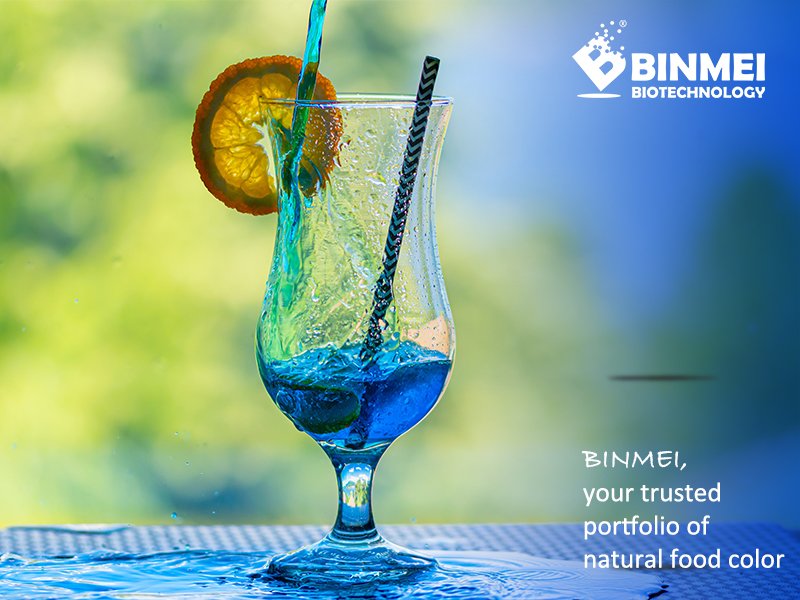Natural blue in expansion: The FDA allows spirulina extract to be used in beverages
In 2020, a request to modify the scope of use of spirulina extract as a natural blue coloring ingredient was formally submitted to the US FDA. Recently, FDA approved the request, and the newly revised regulations will take effect on December 13, 2022. The use of natural colors in food and beverage is always challenging, from regulatory hurdles to technical limitations, but with the continuous breakthrough and innovation of natural color companies, the opportunities for food and beverage manufacturers will be more diverse.

The main coloring component of spirulina extract is phycocyanin, which is usually extracted from algae (spirulina) in a gentle physical way, without adding any chemical additives, in fact, in every step of phycocyanin extraction, it can be directly consumed.
Health and safety have come under increased concern following the COVID-19 outbreak. Consumers’ concern for food and beverage is not only delicious and natural, but also health has become an important choice factor in consumption. Using natural colors instead of artificial colors will meet consumer desires for health and safety while satisfying consumers’ need to eat with their eyes. Natural pigments often provide nutrients, for example, spirulina extract has been proven to improve the body’s immunity, keep the skin hydrated, etc., and it is also a very powerful antioxidant.
Since the US FDA approved spirulina extract as a natural color in 2013, blue has been a popular color in the food and beverage market. With the development of social media, consumers nowadays mostly eat with their eyes, and colorful colors can attract consumers’ attention. Classic blue is the Pantone color of 2020, and Pantone believes that blue can bring calm and peace of mind. A survey by Mintel showed that nearly two in five consumers perceive blue as a color that enhances their mood, outperforming all the other colors and rising to three in five among young consumers below 25.
Development history of the safe use range of Spirulina extract
On January 20, 2012, Mars, Inc filed a petition with the FDA to allow Spirulina extract to be added as a natural coloring in candy and chewing gum.
On September 13, 2013, the application became effective and states that Spirulina extract is safe for use in candy and chewing gum.
On May 3, 2014, the FDA expanded the safe use of Spirulina extract as a food coloring additive. Spirulina extract is allowed to be used in confections (including candy and chewing gum), frostings, ice cream and frozen desserts, dessert coatings and toppings, beverage mixes and powders, yogurts, custards, puddings, cottage cheese, gelatin, breadcrumbs, and ready-to-eat cereals (excluding extruded cereals).
On September 22, 2015, the FDA expanded the use of Spirulina extract and deemed it safe for use in coated formulations applied to dietary supplements and drug tablets and capsules
On August 3, 2017, the FDA again revised its regulations for Spirulina extracts, concluding that the use of Spirulina extracts for seasonal coloring of hard-boiled shelled eggs meets the safe level of Good Manufacturing Practice.
On December 13, 2022, the FDA further expanded the safe use of spirulina extract, allowing spirulina extract to be used as a color additive in alcoholic beverages with less than 20 percent alcohol-by-volume content, non-alcoholic beverages, condiments and sauces, dips, dairy product alternatives (identified as non-dairy yogurt alternatives, non-dairy frozen desserts, and non-dairy puddings), salad dressings, and seasoning mixes (unheated).
BINMEI, No.1 China brand of spirulina extract.
BINMEI owns a state-of-the-art production site since 2013 which is focused on natural ingredients, covering about 4,000 square meters. BINMEI has passed FDA registration and has FSSC22000, Halal, Kosher, Organic, etc. certificates. BINMEI also own its independent intellectual property rights and has established a traceable food safety management system from raw materials to finished product.

